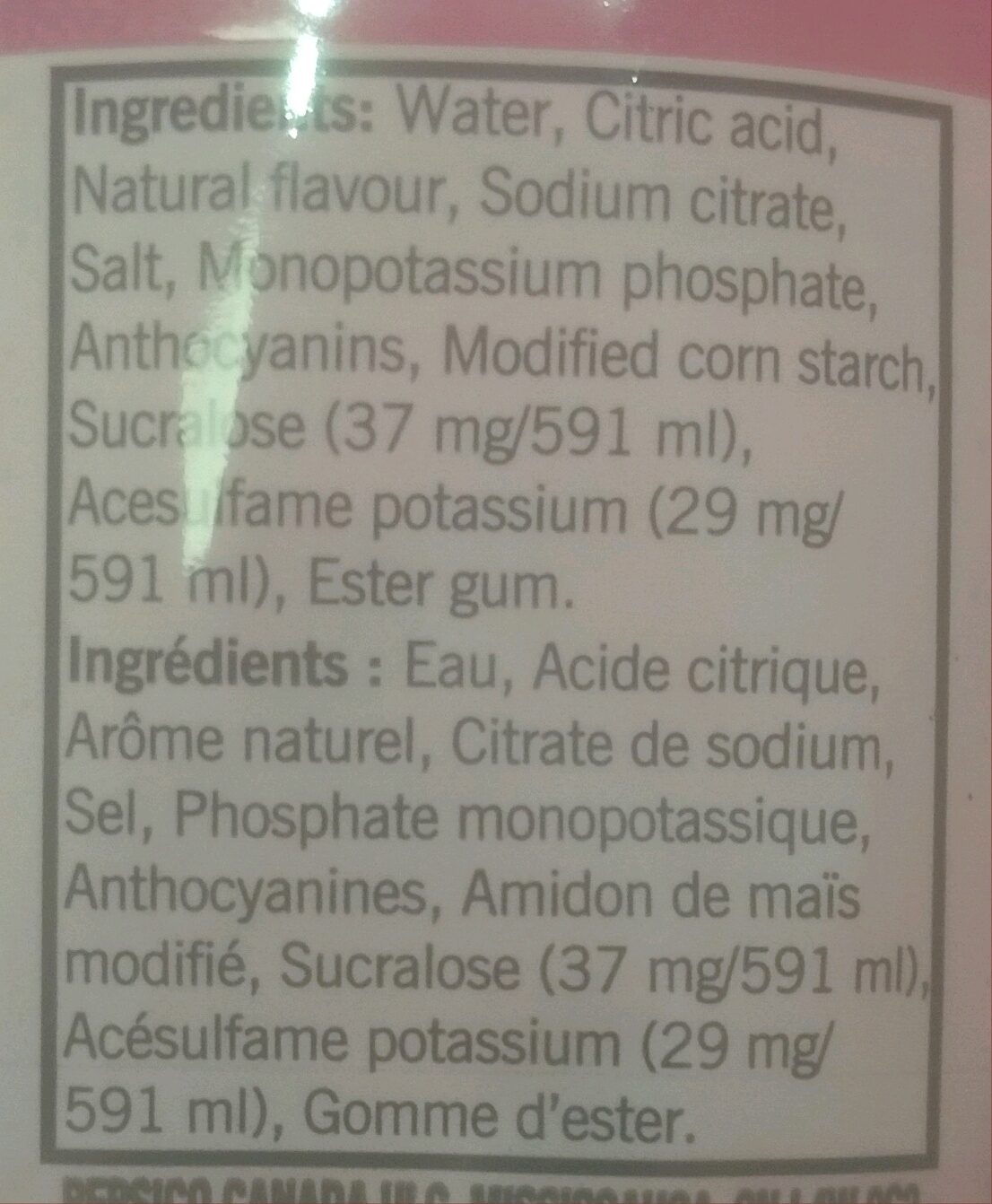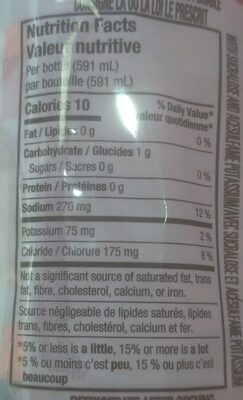Berry G Zero - Gatorade - 591 mL
This product page is not complete. You can help to complete it by editing it and adding more data from the photos we have, or by taking more photos using the app for Android or iPhone/iPad. Thank you!
×
Barcode: 0057271162609 (EAN / EAN-13) 057271162609 (UPC / UPC-A)
Common name: Berry Electrolyte Beverage
Quantity: 591 mL
Packaging: Bottle
Brands: Gatorade
Categories: Beverages, Artificially sweetened beverages, Diet beverages, Dietary drink for sport
Labels, certifications, awards: Kosher, COR Kosher
Stores: Subway
Countries where sold: Canada
Matching with your preferences
Environment
Packaging
Transportation
Report a problem
Data sources
Product added on by kiliweb
Last edit of product page on by binzyboi.
Product page also edited by halal-app-chakib, inf, musarana, openfoodfacts-contributors, packbot, yuka.WWZnNE5JVUZvdmNGcS9OdXdoVHY1ZElwMllLdlltaThEczFNSVE9PQ.









